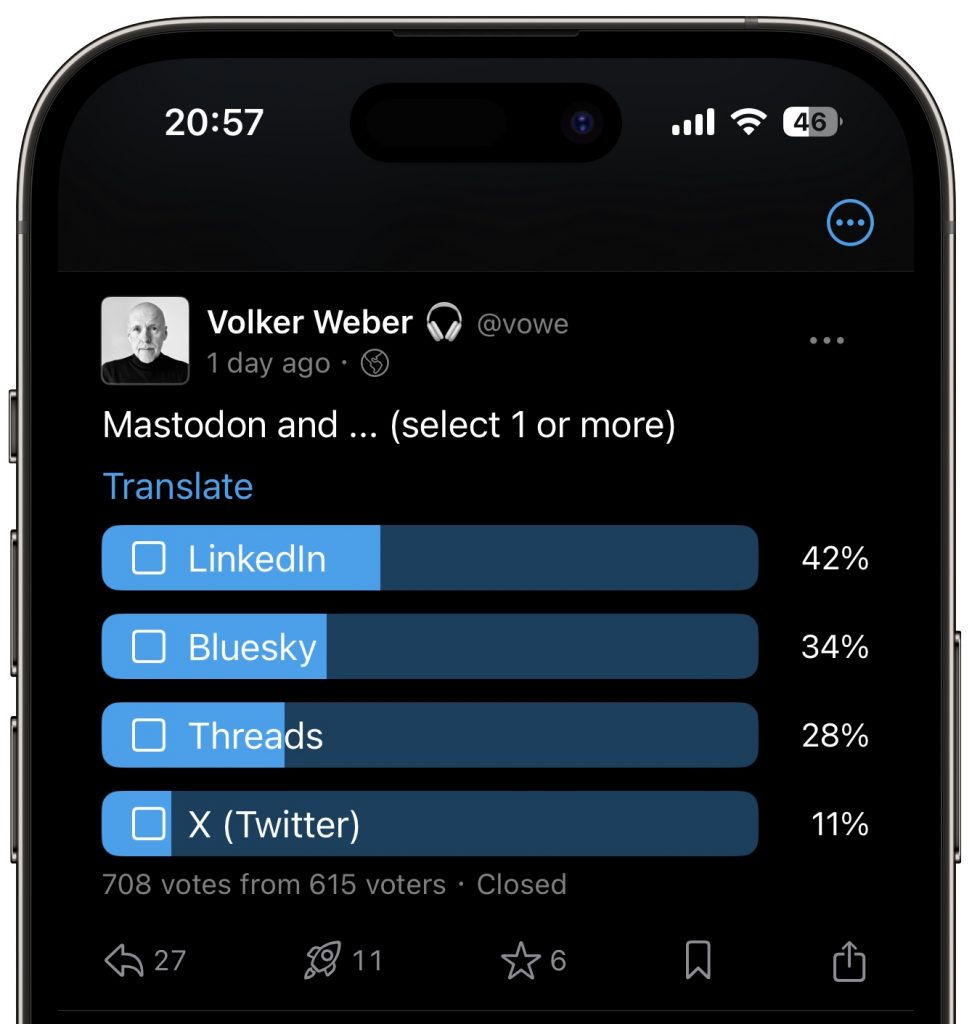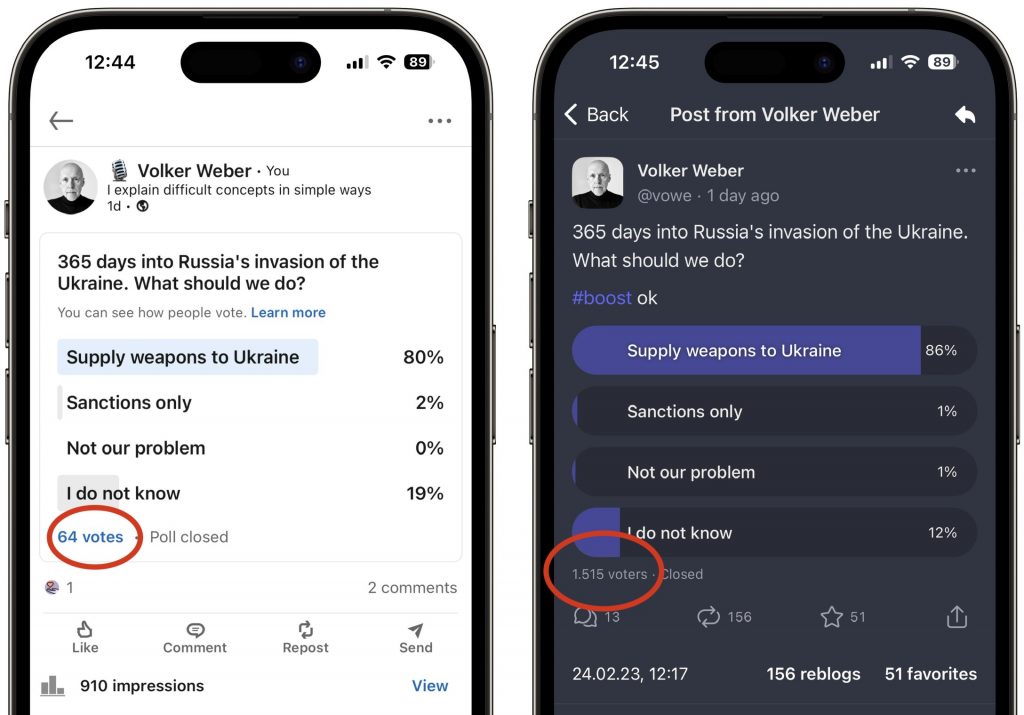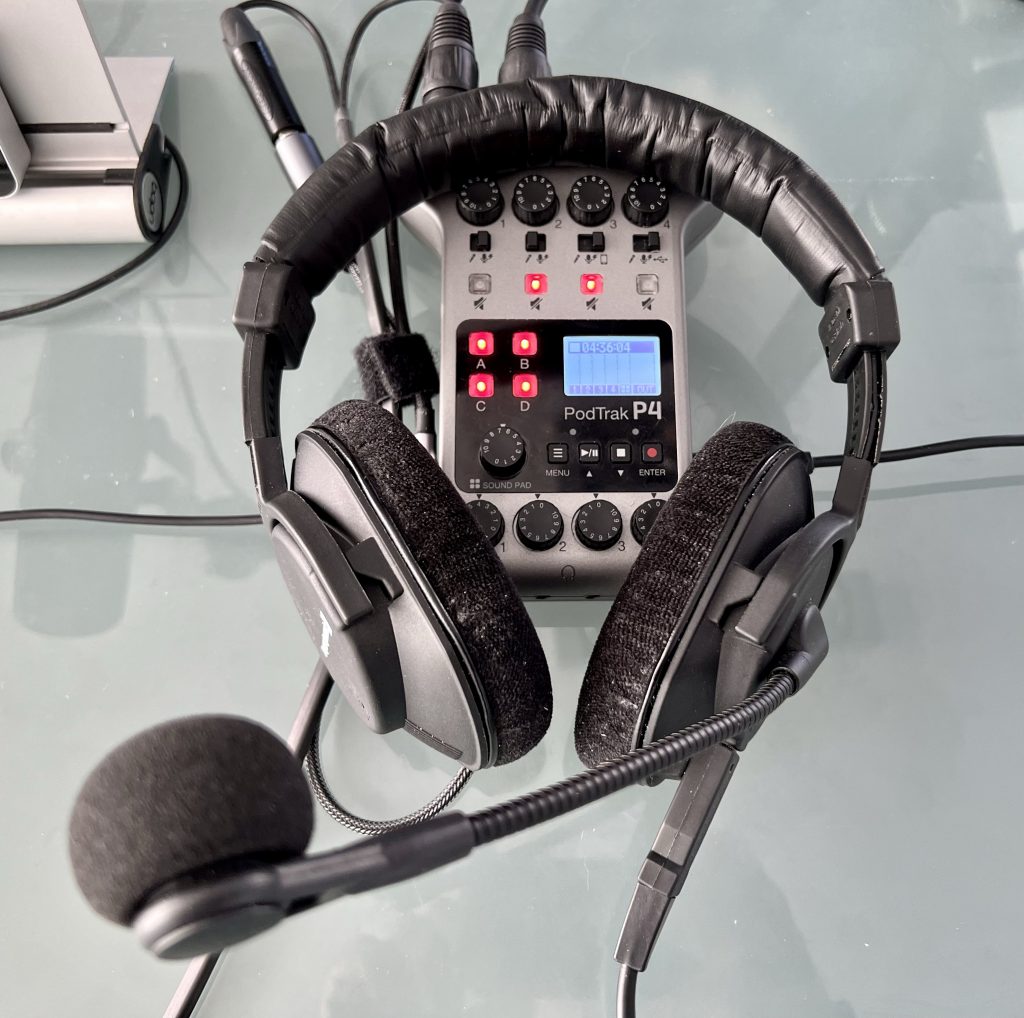
I asked people to mark one or more additional networks they use besides Mastodon and to my great suprise, LinkedIn came out on top.
I also asked on LinkedIn, but I will let this poll run for a week, since LinkedIn is slow to show posts through their algorithm. Also, engagement in polls is usually low, since voting is not anonymous. I can see who voted for what.
As always, people complain when their personal choice is not among the four options I chose. Also, Bluesky does not have polls yet, Threads does, but I am not touch anything Meta with a 10 ft pole. And Twitter? Yeah, right.



